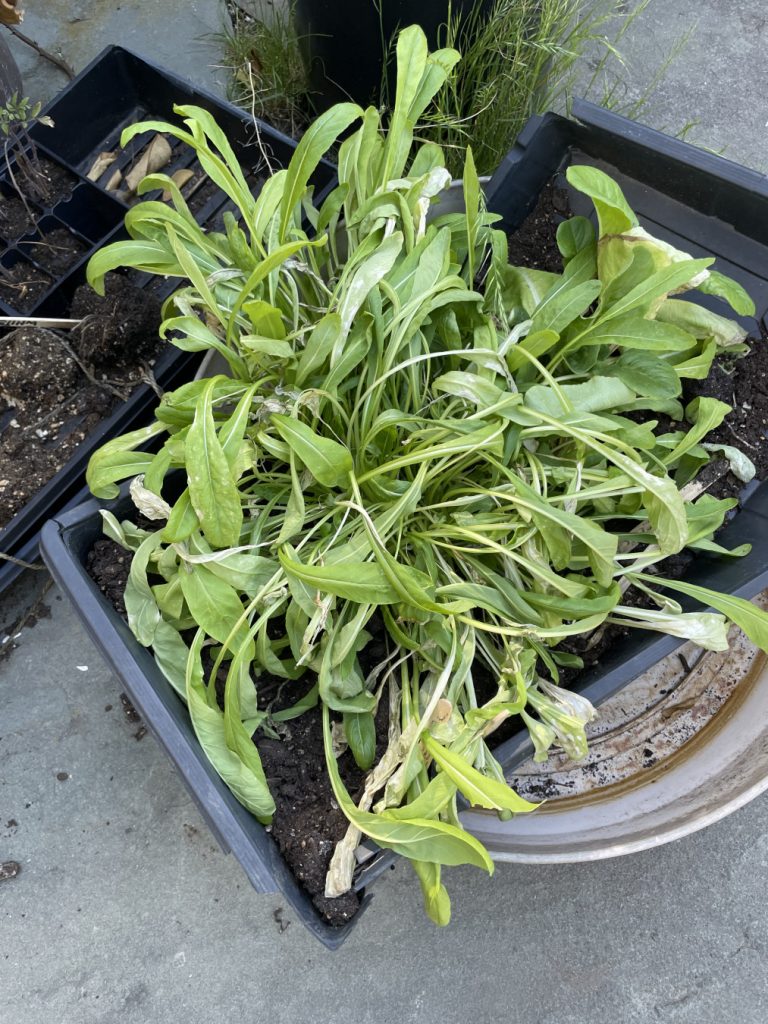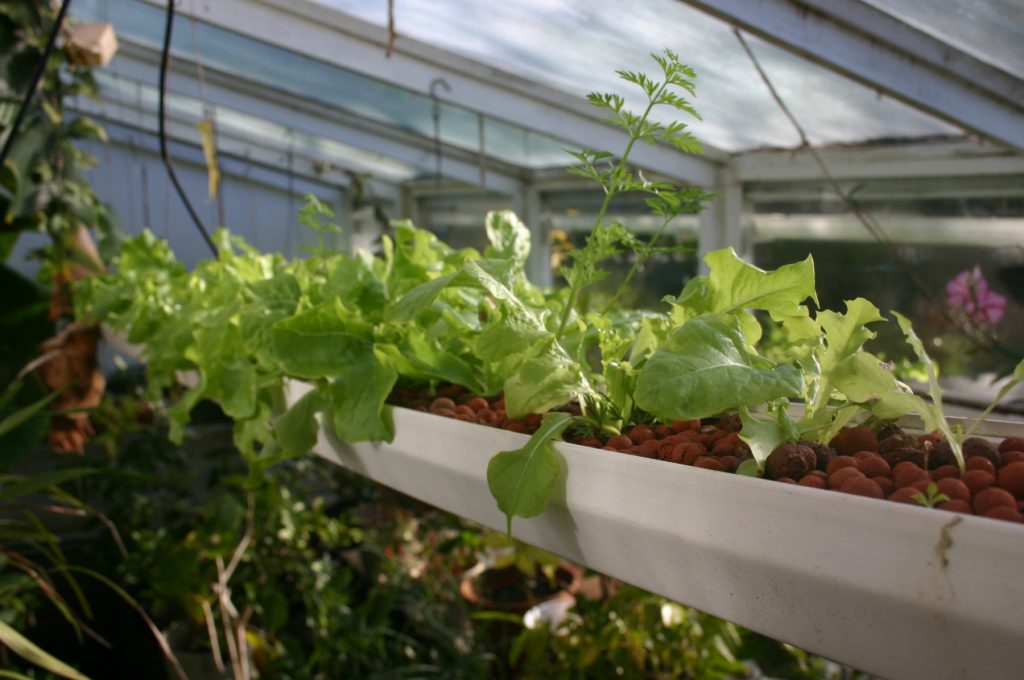
During summer, greenhouse plants need a lot of attention. Temperatures inside a greenhouse can easily soar to over 100oF (38oC) even with all the windows and doors open. Such heat can significantly stress your plants.
The problem with high heat is that it causes water in plants to get quickly depleted through transpiration. Transpiration is the process by which water is pulled up from the soil via the roots of a plant and through the plant body to its leaves, where it evaporates into the air. Transpiration serves several important functions for the plant, one of which is evaporative cooling as the molecules of water are converted to gas and released. When temperatures rise, however, the rate of transpiration increases until the surrounding soil has dried out and the plant has very little internal water left. As a result, water pressure drops in the plant’s cells, and the plant wilts. Initially, wilting can actually be helpful to the plant because the drooping leaves expose less surface to the air and therefore water loss through transpiration decreases. But a wilted state also means that the plant is cooling less. Eventually, serious dehydration will set in if wilting is neglected.
The early stages of wilting are easy to remedy just by giving the plant plenty of water. Moving it into the shade away from the sun’s evaporative rays is also very helpful. I often take a wilted plant outside the greenhouse, put it under the cool shade of a tree, and water it heavily. In a relatively short time, the plant looks just like it did before the wilting occurred.
It’s best, of course, to avoid repeating such water-deficit wilting and reduce the amount of stress placed on your plants. Potted plants are especially at risk in high heat. The plant pot, often black plastic, heats up quickly and dries out the soil. The greenhouse owner should therefore be prepared to water plants often on hot, sunny days, sometimes two or three times daily. To help reduce the number of waterings needed, a layer of organic mulch on top of the soil can slow evaporation from it and help it retain moisture longer. But mulch alone will not be enough. Frequent watering is essential during the heat of summer for greenhouse plants in pots.

An easy way to water relatively small potted plants is simply to lower the pot into a bucket of water until the water reaches the top of the soil. After letting the plant drain a bit, set it on a shelf or stand. I prefer to water this way in the morning when I’m not too rushed and the sun is not too hot. Watering with this method also keeps the plant leaves dry and therefore less prone to mildew and fungal diseases, especially plants such as African violets that are particularly susceptible to these issues. For large plants in large pots that can’t be lifted into a bucket of water, watering with a watering can is the traditional option, especially if you want to keep the leaves dry. This method efficiently focuses the water on the root zone, where it’s needed, so very little water is wasted.
Sometimes, however, spraying the entire plant with water can be beneficial. It can wash the leaves clean of dust, which can interfere with photosynthesis; it can remove tiny insect pests, such as aphids; and it can cool the plant and temporarily reduce its transpiration by putting a thin layer of water on the leaves. If you are going to spray-water your plants, though, the best time to do so is in the early morning so that the leaves have time to dry during the day. Wet leaves at night are often inviting plant maladies that thrive on lots of moisture.










